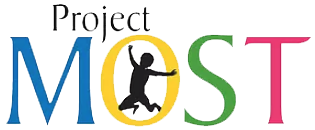Commemorating International Women’s Day With Our First-Ever Scholarship For Girls Fund
March 8th is recognized by the United Nations as International Women’s Day, established to focus on women’s rights.
This year’s International Women’s Day (#IWD2020) theme is #EachForEqual and centers on gender equality. The #IWD2020 community page reads, “The race is on for the gender-equal boardroom, a gender-equal government, gender-equal media coverage, gender-equal workplaces, gender-equal sports coverage, more gender equality in health and wealth ... so let's make it happen.” Specifically, this year IWD is looking at equality as a business issue, shedding light on the deprivation of authority that accompanies unmet economic equality.
There are many factors that go into addressing unequal realized economic potential between men and women—from unmatched pay to unfair family leave policies and under-employment, and ultimately an even wider gap in wealth accumulation. According to an article in Time, “Women earn somewhere between about 79 percent and 85 percent compared to men(1).” To discuss gender equality, we first and foremost need to emphasize girls’ equal access to education. Here are just a few statistics from the United Nations:
Women make up more than two-thirds of the world's 796 million illiterate people.
Every additional year of primary school increases girls' eventual wages by 10-20 percent.
Research indicates that when more income is put into the hands of women, child nutrition, health, and education improves.
Evidence from 25 developed and developing countries indicates that countries with higher female parliamentary representation are more likely to set aside protected land areas. (2)
Gender equality and consequently, equal access to education for girls is a human rights issue, world health issue, and climate issue. Globally recognized activist, Malala Yousafzai asks, “Why are more than 130 million girls out of school?” on her advocacy organization’s page, Malala Fund and reminds us of the host of barriers to education girls face and enormous transformations we can make to communities by tearing them down.
In the United States, an increasing number of females are pursuing higher education which is great news. Rather, achievement gaps appear more closely related to attitudes than to course-taking. While boys and girls tend to achieve at a similar measure in early youth, by high school, the percentage of females who say that they are good at mathematics and science is consistently lower than that of males. Data shows involving students in pre primary programs beginning at earlier ages may provide them with valuable experiences that will help them to start elementary school better prepared to learn. (3)
As a matter of fact, Project MOST programs increase learning time by 35 percent and improve student performance in the areas of math, science, technology, engineering, the arts, and language arts. We might also ask ourselves if access to after school programs and academic assistance for young students can promote self-confidence in one’s capacity for achievement.
In commemoration of International Women’s Day, Project MOST is establishing its first-ever Scholarship For Girls. Consistent with our mission to make valuable extracurricular programs and academic assistance available and financially accessible to the youth in our community, this is an opportunity to make sure we are serving the young women of our community. Malala Yousafzai said it best, “We cannot all succeed when half of us are held back.”
To make a donation to the Project MOST Scholarship For Girls Fund, click here.
Wilson, C. (2019, April 2). Just How Bad Is the Gender Pay Gap? Brutal, When You Look at a Lifetime of Work. Retrieved from https://time.com/5562269/equal-pay-day-women-men-lifetime-wages/
UN Inter-Agency Task Force on Rural Women. (Accessed: 2020, Feb. 25). Facts & Figures: Rural Women and the Millennium Development Goals. Retrieved from https://www.unwomen.org/en/news/in-focus/commission-on-the-status-of-women-2012/facts-and-figures
Bae Y., Choy S., Geddes C., Sable J., and T. Snyder. “Trends in Educational Equity of Girls and Women.” National Center for Education Statistics, U.S. Department of Education Office of Educational Research and Improvement. March 2000. Retrieved from https://nces.ed.gov/pubs2000/2000030.pdf


